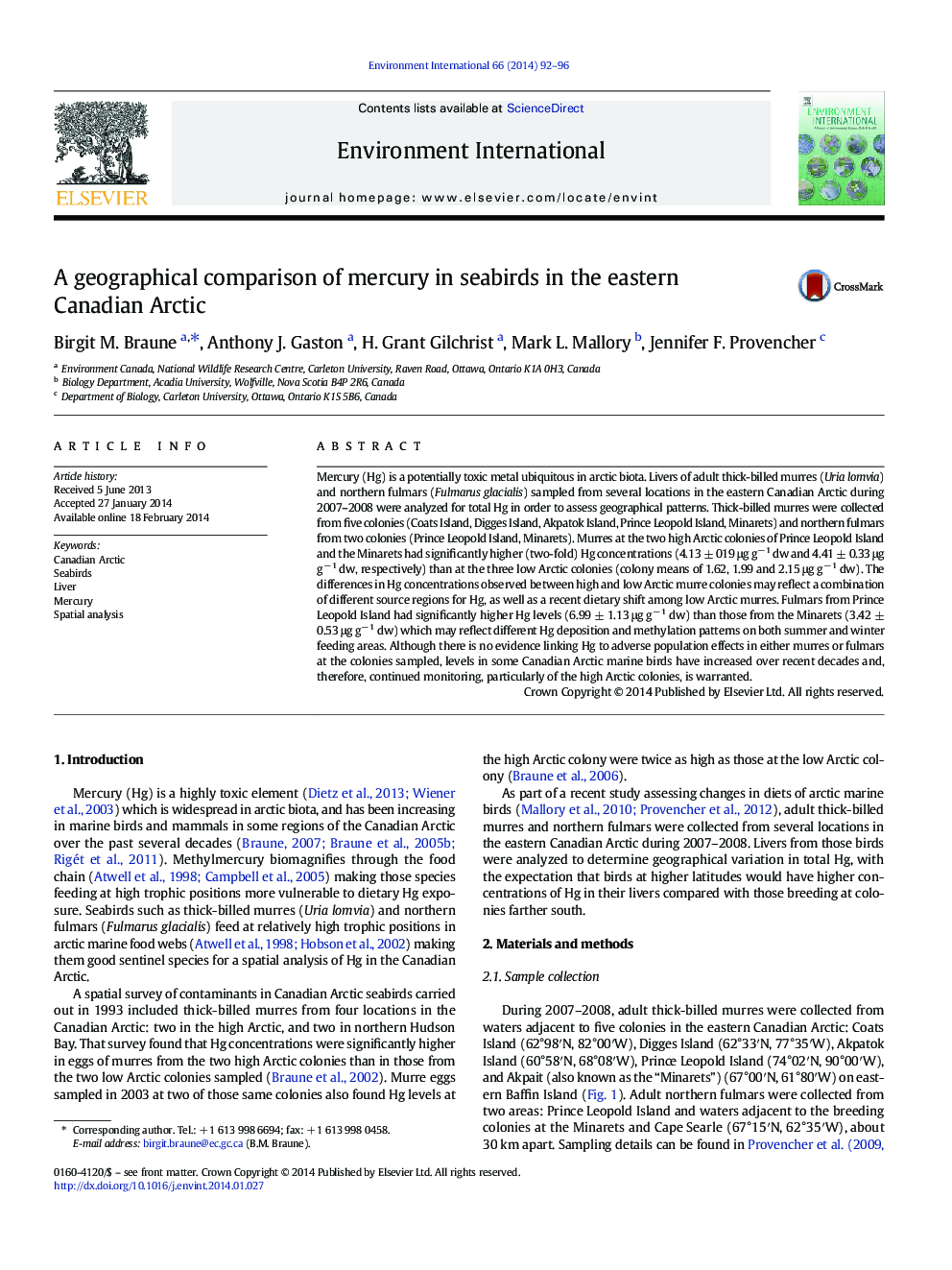| Article ID | Journal | Published Year | Pages | File Type |
|---|---|---|---|---|
| 6314139 | Environment International | 2014 | 5 Pages |
Abstract
Mercury (Hg) is a potentially toxic metal ubiquitous in arctic biota. Livers of adult thick-billed murres (Uria lomvia) and northern fulmars (Fulmarus glacialis) sampled from several locations in the eastern Canadian Arctic during 2007-2008 were analyzed for total Hg in order to assess geographical patterns. Thick-billed murres were collected from five colonies (Coats Island, Digges Island, Akpatok Island, Prince Leopold Island, Minarets) and northern fulmars from two colonies (Prince Leopold Island, Minarets). Murres at the two high Arctic colonies of Prince Leopold Island and the Minarets had significantly higher (two-fold) Hg concentrations (4.13 ± 019 μg gâ 1 dw and 4.41 ± 0.33 μg gâ 1 dw, respectively) than at the three low Arctic colonies (colony means of 1.62, 1.99 and 2.15 μg gâ 1 dw). The differences in Hg concentrations observed between high and low Arctic murre colonies may reflect a combination of different source regions for Hg, as well as a recent dietary shift among low Arctic murres. Fulmars from Prince Leopold Island had significantly higher Hg levels (6.99 ± 1.13 μg gâ 1 dw) than those from the Minarets (3.42 ± 0.53 μg gâ 1 dw) which may reflect different Hg deposition and methylation patterns on both summer and winter feeding areas. Although there is no evidence linking Hg to adverse population effects in either murres or fulmars at the colonies sampled, levels in some Canadian Arctic marine birds have increased over recent decades and, therefore, continued monitoring, particularly of the high Arctic colonies, is warranted.
Related Topics
Life Sciences
Environmental Science
Environmental Chemistry
Authors
Birgit M. Braune, Anthony J. Gaston, H. Grant Gilchrist, Mark L. Mallory, Jennifer F. Provencher,
